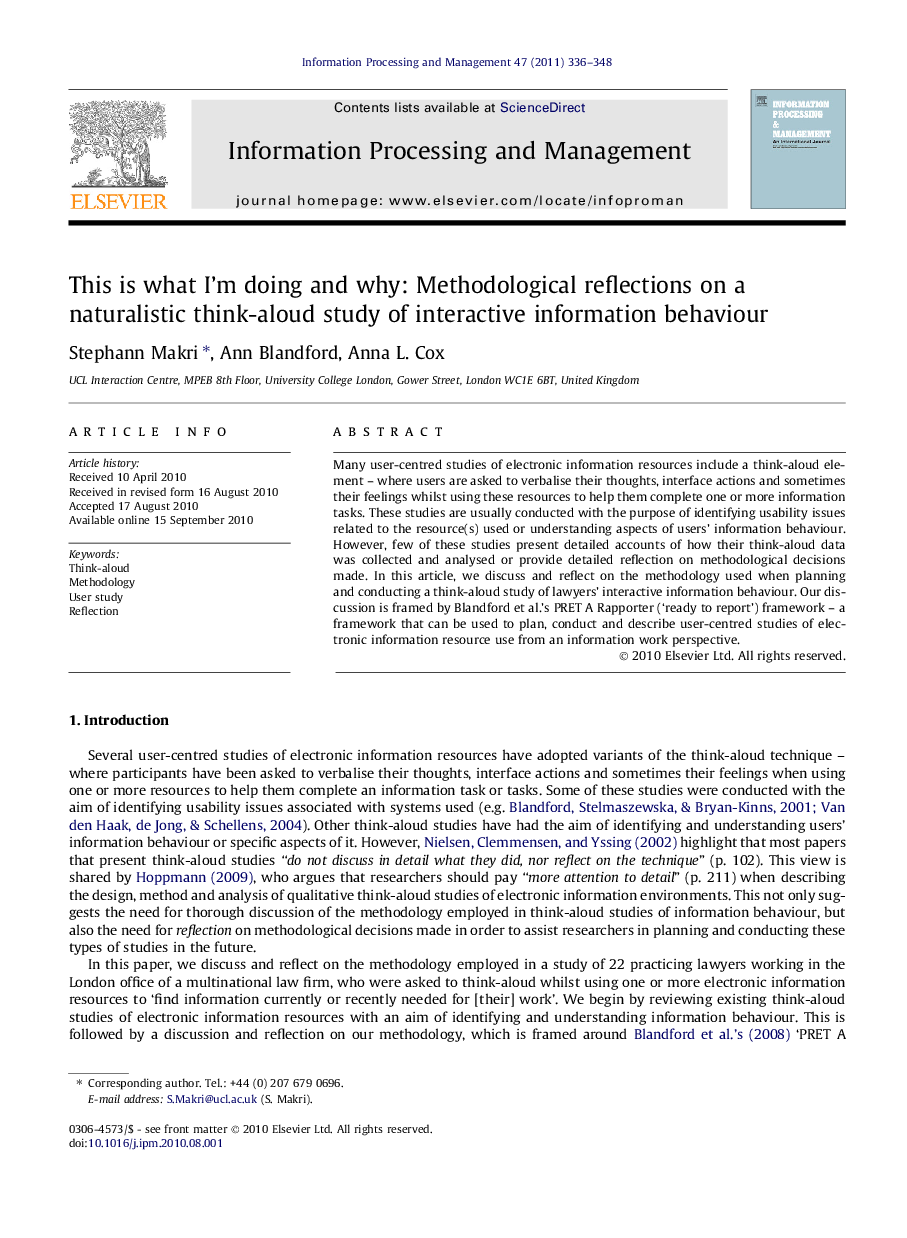| Article ID | Journal | Published Year | Pages | File Type |
|---|---|---|---|---|
| 515451 | Information Processing & Management | 2011 | 13 Pages |
Many user-centred studies of electronic information resources include a think-aloud element – where users are asked to verbalise their thoughts, interface actions and sometimes their feelings whilst using these resources to help them complete one or more information tasks. These studies are usually conducted with the purpose of identifying usability issues related to the resource(s) used or understanding aspects of users’ information behaviour. However, few of these studies present detailed accounts of how their think-aloud data was collected and analysed or provide detailed reflection on methodological decisions made. In this article, we discuss and reflect on the methodology used when planning and conducting a think-aloud study of lawyers’ interactive information behaviour. Our discussion is framed by Blandford et al.’s PRET A Rapporter (‘ready to report’) framework – a framework that can be used to plan, conduct and describe user-centred studies of electronic information resource use from an information work perspective.
Research highlights► Think-aloud studies are useful for studies of interactive information behaviour. ► It is necessary to make important decisions/trade-offs to ensure rich, unbiased data. ► Reflections from this study can be considered as guidance for future research. ► This study also suggests the importance of discussing and reflecting on methodology.
